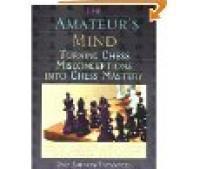
The Vienna Game, Part I
History
The Vienna Game was originally called Hamppe's Game after Carl Hamppe (1815-1876) and took its current name in the 1890's due to its ongoing popularity in Vienna, for centuries the capital of the Holy Roman and Austro-Hungarian Empires. An important intellectual and musical center, Vienna embraced chess as part of its culture. Steinitz, Tartakower, and Spielmann hailed from Vienna and used the opening that bears its name. After World War I, the opening, like the empire, has has suffered decline. Except for a revival by American Weaver Adams (who boldly claimed that it led to a forced win for white) in the 1940's and 1950's, the Vienna has taken a backseat to other King's Pawn openings like the Ruy Lopez, the Scotch Opeining, and the Giucco Piano. Although not forcing, there is nothing wrong with the Vienna, and grandmasters like Shabalov and Anand use it on occasion, and club and tournament players use it frequently. Notable practitioners of the Vienna Game include Paulsen, Alekhine, Keres, and occasionall uses by Anand, Leko, Morozevich, Shirov, and even Kasparov, which is a testament to the soundness of the Vienna even at the highest levels.
Statistics
The Vienna Game and the Bishop's Opening have the benefit of having significantly less theory to learn than the much more common 2. Nf3 systems. The Petroff's Defense and Ruy Lopez alone have over 150,000 database games with another 25,000 for less common defenses like the Philidor. By contrast, the Vienna Game and Bishop's Opening have less than 30,000 database games, but there statistical results do not suffer for rarity.
Opening White Score
Vienna Game 57%
Bishop's Opening 57%
All 2. Nf3 56%
Petroff's Defense 57%
Ruy Lopez 57%
2. Nf3 Nc6 3. Bc4 54%
King's Gambit (all) 58%
K.G. (excl. KGD) 54%
As you can see, the results of the Vienna Game and Bishop's Opening are very comparable to the heavily theoretical 2. Nf3 openings such as the Ruy Lopez.
Introduction
The Vienna Game
The Bishop's Opening
One of the main advantages of these two related systems is that they are very versitile and provide a sound and aggressive repitoire against 1..e5. A variety of positions can be reached, ranging from the very tactical to the very positional depending on the player's style and choice of variation. There are very aggressive lines with bold sacrifices to very subtle positional lines. This gives the Vienna player the option to specialize in one approach or become skilled at a variety of positions to confront different situations.
Virtually all lines of these two systems share a common feature in that the move 2.c3 does not block the f-pawn, and allows a future f-pawn break. The opening was originally largely intended as a way to play a slightly delayed King's Gambit. While these lines still remain popular, other approaches have become more refined over the years, namely the 3. Bc4 lines and the 3. g3 lines.
Common Themes
The Bc4 Question
One of the first key decisions is when, or if, to move the bishop to c4. Obviously, in the Bishop's Opening, this occurs on move two. In the Vienna, it generally happens either on move three, or not at all. Obviously, the main advantage to placing the bishop on c4 is to threaten the f7 square, but it also helps to prevent a black break to d5.
On the downside, the bishop on c4 can be exchanged (Nc7-a5) or attacked with c5 and d5.
Generally, if white chooses not to play the bishop to c4, he will opt to fianchetto the bishop to g2.
Whites f4 Break
The second major decision is when to play the f pawn to f4. Since the entire point of 2. Nc3 rather than 2. Nf3 is to leave the f pawn unobstructed, the question is not generally not IF to play the pawn to f4, but WHEN. The advantages are obvious: it attacks the pawn on e5, possibly opens the f file for the rook after castling, and often paves the way for a kingside attack.
In part two of this series on the Vienna Game, we will examine some of the other key patterns and themes, and begin to take a closer look at some of the lines.
Oh, and if you are interested in the opening, check out the chess.com Vienna Gamers Group at...
http://www.chess.com/groups/home/vienna-gamers
Sources
The Vienna Game Chessbase, Gregory Huber, 2005
Modern Chess Openings 15th edition





